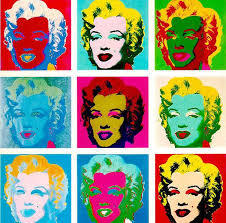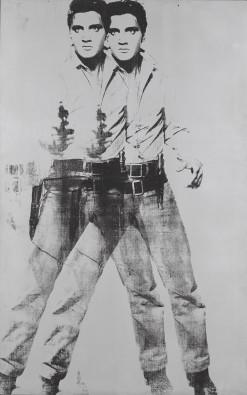Introduction
Postmodernism of pop art refers to the historical events in the early 1960s that resulted in the advent of the new era of artwork. According to Osterworld (2003), pop art combines high and low art. Andy Warhol was a pop art revolutionist through the presentation of his artwork by the abstract expressionism (Rubin 2006). Warhol was fond of using images such as Marilyn Monroe. The fame of popular artists increased with an increase in technology.
The works of Warhol were dominant over the years because of the concentration on the ideas and concepts that were long past. Warhol wanted publicity through the use of realistic ideologies. The pop artist abandoned transcendence for total immersion in immanence in the existing society in order to become a celebrity of contemporary commerce and image construction. In the postmodernism of pop art, the consumer society obtains triumph and manages to colonize every form of art. The pop-art involved a combination of images and writings that were original at that time (Osterworld 2003).
Analysis
According to the cultural logic of Warhol, modern technology in art involved artistic styles of depthlessness that would give a supreme formal feature. Warhol sold his label, unlike other artists who sold a good piece of their artwork. The change of Warhol artwork was outrageous and unique and involved appreciating traditional realism that had dominated many years (Kramer 2006). Warhol changed the concept that prevailed during the Renaissance period into appreciating modern technology through the use of bright colors. For example, Warhol used bright colors of Marilyn Monroe to demonstrate the postmodern technology of pop art as shown in figure 1 (Osterweil 2007).

The technology present in Warhol’s artwork bridges the postmodern factor that confuses the audience. According to Kramer (2006), the use of screen-prints and photograph collages demonstrated the new technology of pop art in postmodernism. Warhol would change the appearance of the original image without conflicting its essence and authenticity. Warhol’s works were not original, as he did not create new pieces, but recreated a masterpiece of what was created by other artists.
In other words, Warhol created new pieces of art from the original work. The technology present in the artwork created a distinction between high art and low art (Ascott 2003). Warhol represented the low art, but people believed that his drawings and paintings would classify him as a representative of the high art. On the other hand, the use of computers was considered as low art. Warhol was the breakpoint between high art and low art since he combined drawing, painting, and computer images in his pop artwork.
Warhol film studio attracted young artists, actors, celebrities, and musicians in pop art. Pop art uses the notion of the surface as aesthetic and provocative in the establishment of a new artistic identity. Warhol would use silk-screen to produce repetitive patterns of photographic images (Osterworld, 2003). The photographic images were famous people, everyday objects, and macabre scenes (Rubin 2006). People living during the 1960’s era found pop art as a style and artistic phenomena that have concrete expression. There exists a balance in pop art through euphoric and catastrophic outlook.
Pop art advocates for inflationary husks that chances with civilization. Civilization molds the images of people, things, nature, and technology. Pop art is cheerful, ironic, and critical. Rubin (2006) argues that Warhol through pop art would respond to the main words in the print media, especially the words with the historical perspective, whose aesthetics shape the paintings and the image of the era. In addition, the clichéd models of pop art determine the behavior of pop euphoria. Pop culture and lifestyle changes with technology through the adaptation of the new phenomena of presentation of the artwork (Rubin 2006).
Warhol depicts technology in artwork through the use of unique, whimsical styles in his drawings and paintings. For example, the double Elvis Presley painting, as shown in figure 2, shows his artistic movement during the performance of his songs on stage (Osterweil 2007).

In relation to Tribe and Jana’s (2007) argument, the use of computers in creating images is an indication of adopting modern technology in the artwork and the use of bright colors in painting is a depiction of the use of advanced technology in postmodernism. Industrialization in the developed countries has an influence on pop art due to the frequent use of technological conditions in art production (Edmonds & Candy 2002).
The technology depicted in Warhol’s works involves an analysis of community affairs and the provision of a visual seismogram of the community achievements through creative fashions of art. Paintings of Warhol had a subjective stance of offering the commitment of objectivity in the artistic expression of the intellectual process of depicting technology in the artwork. Warhol faced massive personal reactions due to his continuous presentations of everyday symbols that required repetitive definition and expression of the will. Technology is also depicted through the theatrical use of images, people, space, action, objects, and art in a kind of performance (Ascott 2003).
In addition, Warhol’s artwork depicted the modern technology through parallel development to the use of images of pop art in painting, sculpture, music, film, photography, and literature (Cubitt & Thomas 2013). Pop paintings were highly personal that involved the use of figurative elements that required extensive analysis, restructuring, and drawing them into a comprehensive abstract. Technology and civilization come hand in hand to relate to the vulnerability of developing society.
Digitally networked technology creates new opportunities for innovation and growth of the economy (Ascott 2003). Warhol’s artistic works got distributed into different museums through the use of digital technology of floppy disks and hard disks. The public appreciates the discovery of new methods of sharing the cultural content and experiences of the famous artist present in the postmodern era of the 1960s. With the use of technology, Warhol depicts his artworks through the translation of manipulability and the inflationary character of his paintings to give the paintings meaning from meaningless pictures (Cubitt & Thomas 2013).
Conclusion
Stereotyping the persona of a star involves the use of modern technology that will link essential characters to an ironic attitude (Ascott 2003). Technological theories have a relation with email and internet use in society. Online computer networks affect artistic medium. The aesthetics and interactivity of artwork on computers may result in the overpopulation of cyberspace (Cubitt & Thomas 2013).
According to Edmonds and Candy (2002, p. 93), network communication shapes artistic behavior and consciousness that conventionally defines art in modern technology. The use of telematics in everyday activity results in offering artistic challenges in traditional relationships, between audience, artwork, and high art artists. The integration of technology in traditional artistic aspects results in a continuous flow of information in electronic format (Ascott 2003). Theories of technology give historical ideas of art and philosophy. The increasing role of the internet and digital networking in artwork within modern society depicts the use of technology in the art (Tribe & Jana 2007).
References
Ascott, R. 2003, Telematic embrace: visionary theories of art, technology, and consciousness. University of California Press, California, LA.
Cubitt, S., & Thomas, P. 2013, Relive: Media Art Histories. MIT Press, Cambridge, MA.
Edmonds, E, & Candy, L 2002, ‘Creativity, art practice, and knowledge’, Communications of the ACM, vol. 45, no. 10, pp. 91-95.
Kramer, H. 2006, The Triumph of Modernism: The Art World, 1985-2005. Ivan R. Dee, Chicago, IL.
Osterweil, A 2007, ‘Andy Warhol Screen Tests: The Films of Andy Warhol, Catalogue Raisonné’, The Moving Image, vol. 7, no. 1, pp. 100-103.
Osterworld, T. 2003, Pop Art. Taschen, London.
Rubin, S. G 2006, Andy Warhol: Pop Art Painter, University of Michigan Press, Michigan, MI.
Tribe, M. & Jana, R. 2007, New Media Art, Introduction. Taschen, Rome.